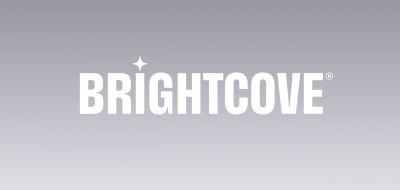The Q&A session plays an important role in online events, just as it does in offline events. It is a key to not only resolving participants’ questions, but also to increasing the satisfaction of the event, as it allows questions that are difficult to ask offline to be asked, and it allows the empathy of participants other than the questioner to be visualized. In this article, we will introduce how to solicit questions and provide answers, as well as services that are useful for this purpose.
__Table of Contents__
– [1. If it’s an online event, you can ask questions in real time](#1- “If it’s an online event, you can ask questions in real time”)
– [2. Assign a dedicated person to handle Q&A](#2-qa “Assign a dedicated person to handle Q&A”)
– [3. Consider using a tool specialized for online event Q&A](#3-qa “Consider using a tool specialized for online event Q&A”)
– [4. For higher quality interactive communication] (#4- “For higher quality interactive communication”)
## 1. With online events, you can ask questions in real time
At offline events, it is common for people to raise their hands and ask questions to the speaker after the session has finished. This is because if questions are accepted during the session, it will slow down the session. However, at online events, it is possible to post questions during the session by using chat functions, etc. Even if participants post questions at any time during the speaker’s talk, it will not interrupt the talk.
By using the tools introduced later, you can quantitatively visualize what the participants are wondering about and what they want to know in real time. This will make the session and the online event itself more meaningful.
## 2. Assign a dedicated person to handle Q&A
In live online events, it is common for participants to post questions in real time via chat or other means. However, it is extremely difficult for the moderator to select questions while interacting with the speakers. If you expect to receive a large number of questions, it is a good idea to have someone dedicated to selecting questions. If you are live streaming pre-recorded video (linear distribution), it is possible for the speakers themselves to respond.
In addition, in case there are not many questions from participants, we recommend that the moderator and speakers have a meeting beforehand and prepare some frequently asked questions. Frequently asked questions can act as a catalyst to encourage participants to ask questions, and it can also help to avoid a situation where there are no questions and the Q&A session lacks excitement. The Q&A session is a great opportunity to interact with participants who have a high level of interest and enthusiasm. By preparing in advance to make it a meaningful time, you can also increase the satisfaction of other participants.
It is important to note that not all responses from participants will be positive. It is not desirable for the event to be run in a way that displays criticism of the speaker, or even slander, especially if the posts are anonymous. There is a risk of creating a negative image in the minds of other participants. For this reason, it would be better to have a senior member of staff who can filter out the negative comments in real time.
## 3. Consider using a tool that specializes in Q&A for online events
As mentioned earlier, chat is the first communication tool that comes to mind for online events. [Chatroll] (https://www.brightcove.com/ja/resources/blog/live_stream_chat_1/ “Chatroll”), which we have introduced on this blog in the past, is a reasonably priced service that allows you to set up a chat function simply by embedding it into your page.
However, even if it is a chat, if people have to post their real names, there may be many people who are hesitant to post questions. Depending on the nature of the event and the tools you choose, if you set it up so that people can post questions anonymously, you will probably get more questions posted than you would offline.
Recently, there have also been the emergence of tools that specialize in Q&A, such as <a href=“https://www.sli.do/jp” target=“_blank” title=“Slido”>Slido</a> and <a href=“https://pigeonholelive.com/” target=“_blank” title=“Pigenhole”>Pigenhole</a>, which can be used for online events. If you press ‘Like’ on a question that someone has posted, that question will be displayed at the top of the list, allowing you to express your sympathy or interest in that question. You can also display questions that you have prepared in advance and encourage participants to answer them, and then tally the results in real time and reflect them in the session.
A system that allows you to add Q&A, voting, quizzes, surveys, etc. to online events is called an ‘audience interaction tool’, and Pigenhole, a leading company in this field, says this
“Pigeonhole Live enables interactivity (two-way communication) such as chat and Q&A during online events. This helps to increase participant engagement.”
By using services like this, it is possible to achieve two-way communication with participants even during online events. However, even if there is a system that makes it easy to ask questions, whether or not participants actually use it is a different matter. It is necessary to come up with ways to encourage participants to post questions immediately after the session starts, or to show videos explaining how to use the tool. Going a step further, it is also effective for the moderator to encourage participants to try posting questions at the beginning of the session, and to allow time for them to get used to the tool. In this way, actively and consciously lowering the barrier for participants and creating an atmosphere where it is easy to use the tool is also an extremely important point.
## 4. Higher quality interactive communication
Online events tend to be one-way communication because they are conducted through devices. However, by utilizing Q&A tools like the ones introduced in this article, it is possible to achieve higher quality two-way communication than offline events. When planning online events, please consider incorporating such tools.
Online events are the new normal in the new normal era. Brightcove has prepared a white paper titled “Online Event Thorough Guide” (https://www.brightcove.com/ja/resources/downloads/guides/the-everything-guide-to-virtual-events/ “Online Event Thorough Guide”) (17 pages in total) that summarizes the know-how required to hold online events.




